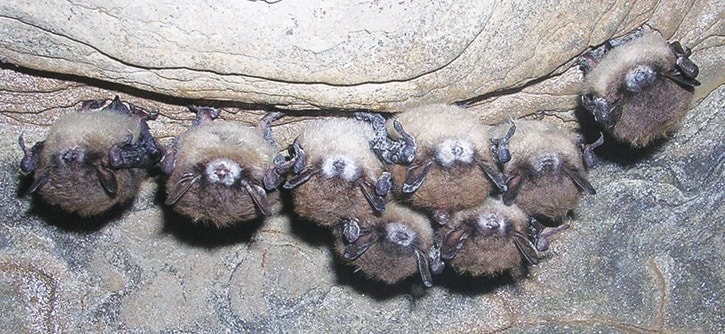For the first time residents in the Cariboo Chilcotin Coast region are being asked to participate in the annual BC Community Bat Program count taking place between June and August.
“Bat counts are a wonderful way for residents to get involved in collecting important scientific information” said Cathy Koot, co-ordinator of the Cariboo section of the BC Community Bat Program. “No special skills are needed, kids can be involved, and you can relax in a deck chair while counting.”
This year the annual bat count will help the B.C. Ministry of Environment collect baseline data on bat populations before the devastating White Nose Syndrome fungal disease affects bats in the province.
“White Nose Syndrome is estimated to have killed more than six million bats since it was first discovered in eastern North America a decade ago,” said biologist Dr. Purnima Govindarajulu with the Ministry of Environment. “In March 2016, the disease was detected just east of Seattle. This has greatly increased our urgency to understand bat populations in B.C. We need the public’s help to census local bat populations.
“The summer of 2016 may be our last year to obtain population estimates before White Nose Syndrome causes widespread declines in western North America.”
Koot said volunteers wait outside a known roost site, such as a bat-house, barn, bridge or attic, and count bats as they fly out at twilight.
They record the final number along with basic information on weather conditions. Ideally, 1-2 counts are done between June 1 and 21 before pups are born, and 1-2 more between July 21 and August 15 when pups are flying.
“We know relatively little about bats across the Cariboo-Chilcotin-Central Coast region including basic information on roost locations on private property and population numbers” Koot said.
“This information will be extremely valuable, particularly if it is collected annually. If people want to get involved but don’t have a roost site on their property, we will try to match them with a roost site nearby.”
Funded by the Habitat Conservation Trust Foundation and with support of the BC Conservation Foundation, the BC Community Bat Program provides information for people dealing with bat issues on their property or have questions about how to attract bats.
To find out more about or to register for a bat count, or to get assistance dealing with bat issues, visit www.bcbats.ca or call 1-855-9BC-BATS ext.22.
